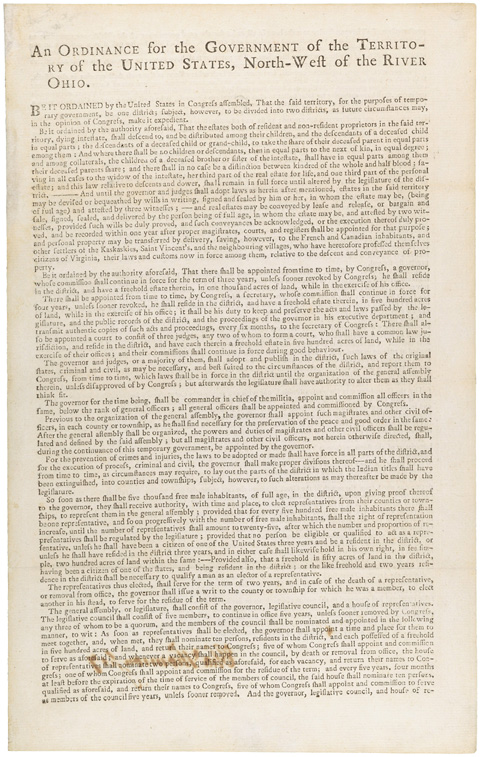Northwest Ordinance was an important law passed by the United States Congress on July 13, 1787. The ordinance provided for the government of the region north of the Ohio River and west of Pennsylvania, then called the Northwest Territory. It became a model for all territories that later entered the Union as states. The Northwest Ordinance was largely the work of General Nathan Dane and political leaders Rufus King and Manasseh Cutler.

Under the terms of the ordinance, the territories could achieve equality with the older states by passing through three steps leading to full self-government: (1) Congress, which governed the territory, appointed a governor, a secretary, and three judges. (2) When the territory, or any division of it, attained an adult male population of 5,000, it could choose a legislature and send to Congress a delegate who could speak there but not vote. (3) When the total population reached 60,000, the territory could apply for admission into the Union on terms of full equality with the older states. The ordinance removed the danger of colonial rebellion because it assured the territories of participation in the national government.
The Northwest Ordinance provided more than a plan of government. It laid the groundwork for social and political democracy in the West. It forbade slavery. All people were guaranteed trial by jury and freedom of religious worship. The ordinance guaranteed fair treatment for the Indians and declared that “means of education shall forever be encouraged.”
The terms of the Northwest Ordinance were so attractive that pioneers poured into the new territory. In 1788, one of the first groups of settlers founded the town of Marietta, Ohio. Thousands of families followed the first settlers in the westward movement. The territory eventually became five states—Ohio, Indiana, Illinois, Michigan, and Wisconsin. The territory included what is now the part of Minnesota east of the Mississippi River.
